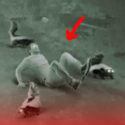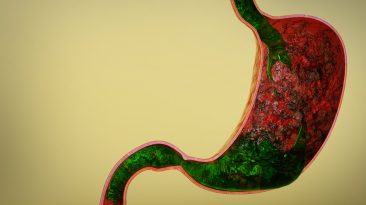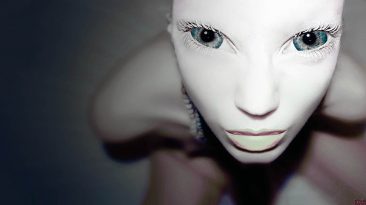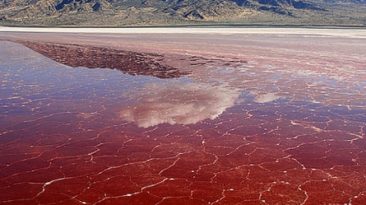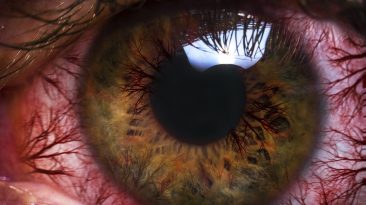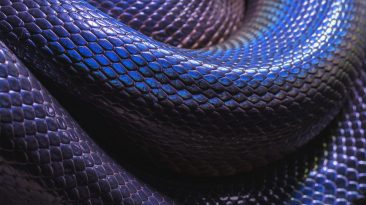Imagine that you could shed your skin like a snake. How long would it take? What would happen to scars and acne? And why would some people shed more often than others?
Snakes shed because they grow out of their skin. But do you know you that you shed too? You constantly regenerate the outer layer of your skin, the epidermis. New skin cells form at the bottom of the epidermis and travel up to the top, pushing out your old skin cells. You replace about 500 million skin cells every day.
You probably don’t notice your skin falling off because it happens so gradually. But in this hypothetical scenario, all your old skin would build up into one dead layer and peel off. Would this be the ultimate glow-up, or a tedious chore?
The process of shedding is called ecdysis, and it happens in three stages. First, you’d notice your skin getting duller and darker. This is the pre-shedding phase. Your body would need a lot of energy as it gears up to remove an entire layer of skin at once.
You’d start feeling tired and irritable, and you’d lose your appetite. You’d want to cancel all of your plans. For the next one to two weeks, you’d prefer to be alone. Yup, you heard me right. The pre-shedding phase would take up to 14 days. This would be a good time to binge watch a TV show, or dig into that book you’ve always said you were going to read.
You’d also want to work from home while the upper layer of your skin loosened. But working from home is not an option for everyone, so workplaces would need to have special sick days just for shedding.
After spending a miserable week pre-shedding, your new skin would be ready to shine. Thankfully, shedding would only last a couple of days.
When snakes shed, they find a rough surface to create a tear near their snout. Then they use that rough surface to keep their old skin in place as they wiggle out of it. So you would create an opening on your forehead and peel your old layer of skin off.
But you’d have to be careful. You couldn’t just peel off all your old skin at once. If you shed too quickly, you could damage your new skin. So you’d remove a little each day. After a couple of days of careful shedding, you’d reach the final stage, the after-shed. And you’d feel like a brand new person.
You would say goodbye to hyperpigmentation, surface level scars and any acne you had before you started shedding. It wouldn’t cure your acne, and you’d still get breakouts if you’re prone to acne. But shedding would be like hitting the reset button on your skin.
As for wrinkles, well, the middle layer of your skin is responsible for those pesky lines. But a fresh layer of outer skin could reduce the appearance of fine lines. And your new skin’s dewy glow would help you look younger. But what about tattoos?
Tattoos deposit ink in the middle layer of your skin, the dermis. And since you’d only shed the outer layer of your skin, the epidermis, your tattoos would be safe. When you finish shedding, you’d have a long, human-shaped shell of yourself. And there would be specific ways to dispose of this skin material. Maybe you could even compost it.
The whole shedding process would be pretty intense. So how often would you have to do it? Well, some snakes shed once a month. But most snakes only shed a handful of times a year. It also depends on age, diet and environment.
You’d shed more often when you were younger because you’d be outgrowing your skin. As you age, you’d shed less. But you’d also shed if you gained or lost weight, or during pregnancy. But what if your skin didn’t shed completely?
It’s called dysecdysis, and it happens to snakes. You might not shed all your skin because your diet could be lacking some nutrients. And skin infections can cause irregular shedding. With our diets today, dysecdysis would be a common issue. But doctors would be able to help.
Humidity helps snakes shed. So you could always go to a spa specifically designed to help people shed. Society would have to adjust if we started shedding our skins like snakes. And while we still shed our skins gradually right now, who knows what the future might hold? The human body is evolving, slowly.
Sources
- “Nature Curiosity: Why Do Snakes Shed Their Skin?“. 2020. Forest Preserve District Of Will County.
- “If the cells of our skin are replaced regularly, why do scars and tattoos persist indefinitely??”. Scientific American.
- “The skinny on how shed skin reduces indoor air pollution”. sciencedaily.com.
- “How Much Human Skin Does A Person Ingest Over The Course Of Their Lifetime?”. Daniel Kolitz. 2021. Gizmodo.
- “How Much Does Your Skin Weigh?”. Remy, Melina. 2021. livescience.com.
- “Snakes That Have Blue Eyes”. Sarah Whitman. 2021. Pets On Mom.Com.









